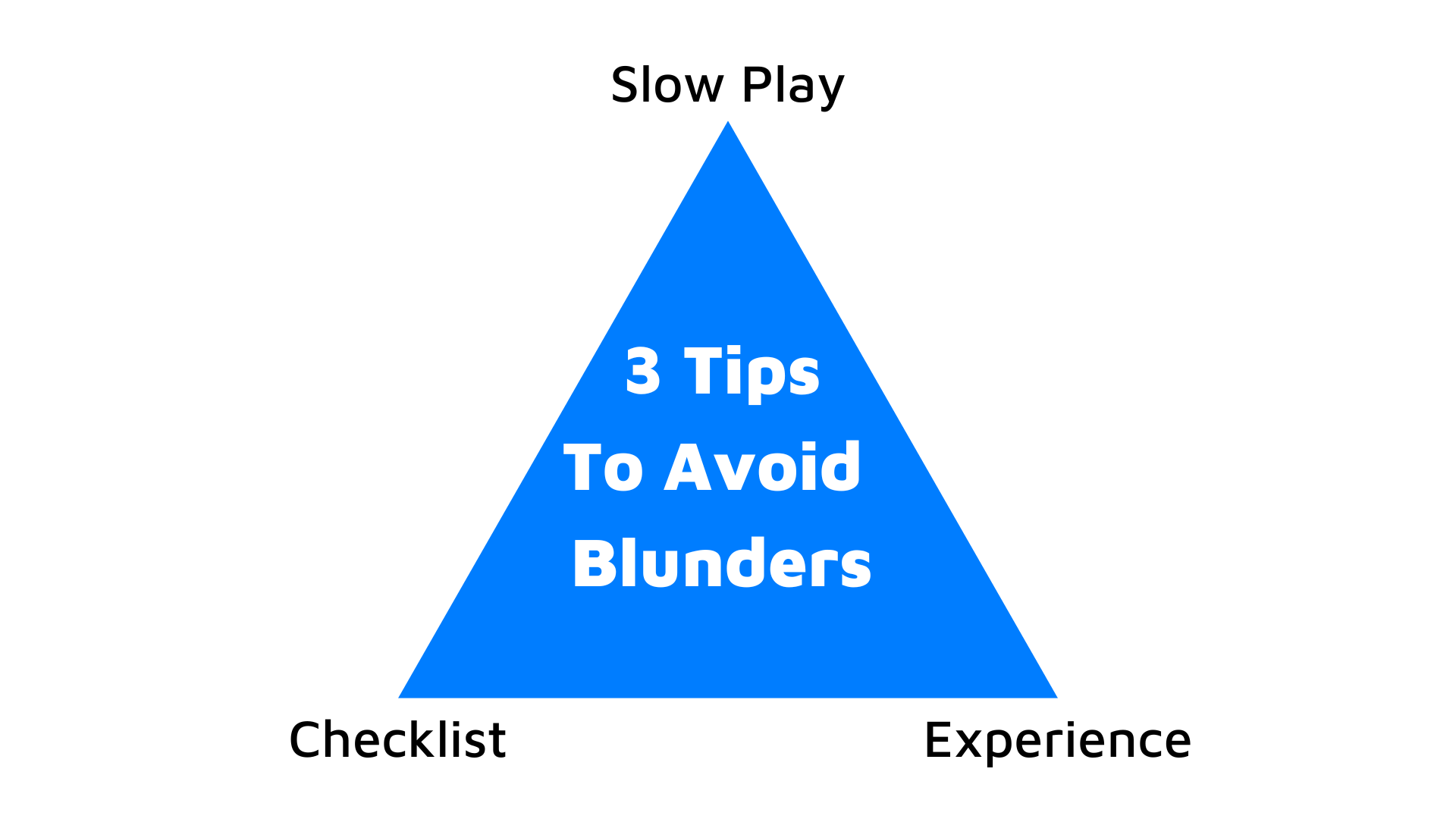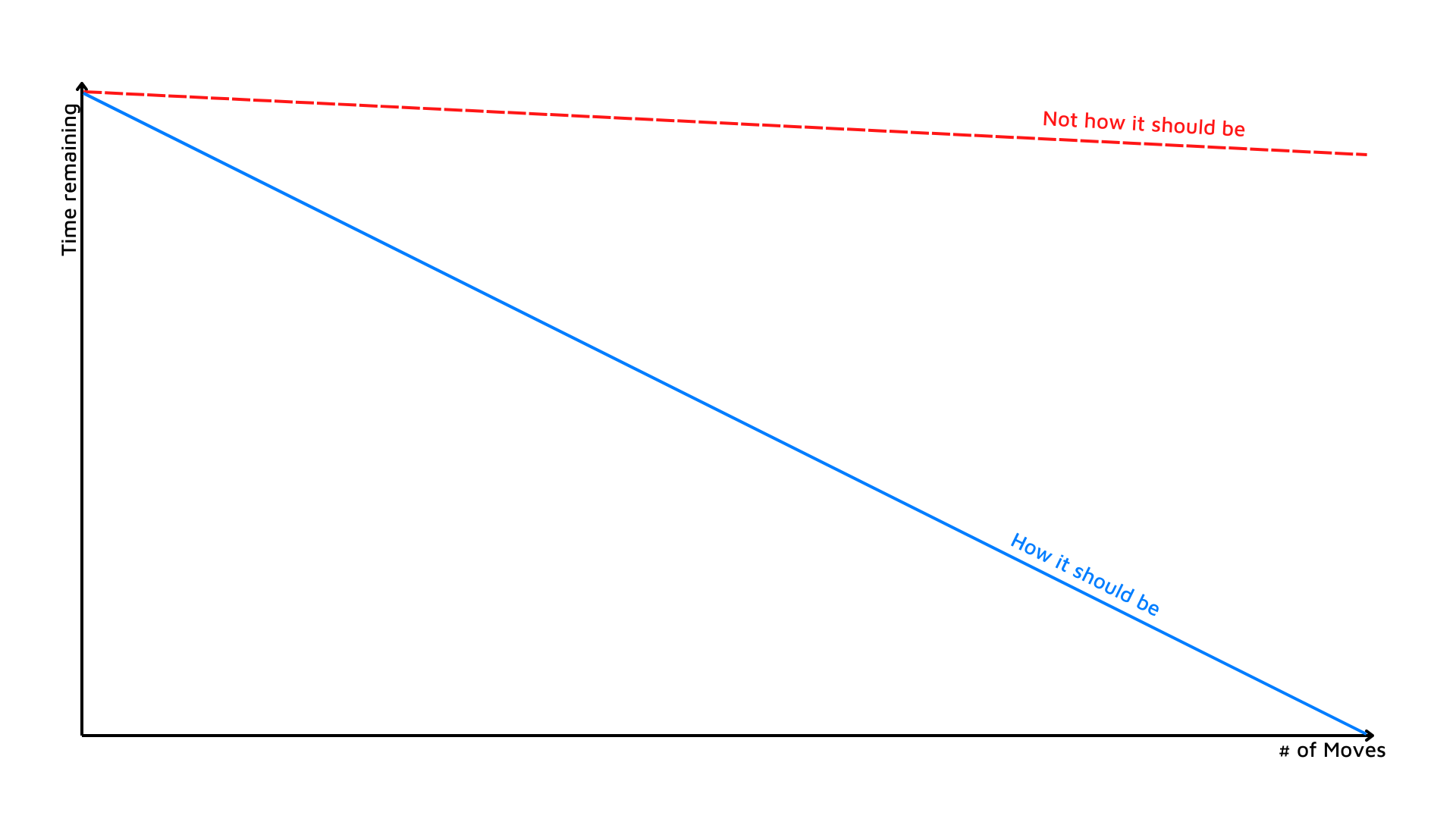How To Stop Blundering in Chess
Losing is part of the game of chess – it’s inevitable. But losing because you blundered is incredibly frustrating and makes you want to through your mouse (or chess pieces) through the room… at least that’s how I feel often times. So in this article we’re going to try our best to make you stop blundering (as often) in chess, by giving you concrete tips and strategies. Let’s dive in!
What is a Blunder?
A blunder in chess can be defined as a critically bad move or poor decision, usually out of carelessness or negligence, with detrimental effects. Losing your queen without compensation would be a good example of a blunder, as it usually leads to a lost position.
While we usually think of blunders as bad moves, they can also come in other forms. Most notably would be a resignation in a winning position, or not taking advantage of a clear mistake your opponent made. But in this article we’re going to focus on you can avoid bad moves.
Managing Expectations When Stopping Blunders
Let’s set the right expectations upfront: You’re not going to stop blundering. Everyone makes mistakes in chess, they’re literally unavoidable. Even the best Grandmasters in the world routinely lose games because they blundering. For example, here is Magnus Carlsen blundering for almost 10 minutes straight:
I hope that video makes you feel a little bit better about your own chess abilities. For me, it always helps to see that even the best chess players in the world aren’t unfailable.
It would be an unrealistic goal to completely stop blundering. But of course, we all want to avoid blunders as much as possible, which is also what we’re trying to achieve with this article.
With that in mind, let’s get into some actual tips so you can avoid blundering in chess.
Three Tips To Stop Blunders
Before we look at concrete strategies and tips for blunder avoidance, why need to understand why we blunder in the first place.
Usually, it comes down to being negligent. Oftentimes you recognize a blunder right after you played the move – so it wasn’t a problem with your calculation, you simply didn’t calculate at all. To avoid being in such situations, I created a little triangle… the “Triagle of Blunder Avoidance” – if you will:

Let’s take a look at each point in detail.
Slow Down and Take Your Time
The most common reason for blunders is simply rushing your moves. In Blitz or even Bullet games, this is often unavoidable. But especially when you’re looking to get better at Rapid chess, you really have to slow down your playing speed.
I am guilty of it myself, but you really shouldn’t ever be in a situation where you have 95% of your time left after 20 moves in a Rapid (or even Classical) game.
Look at this chart, does it reflect how you spend your times in longer time formats?

If so, then you are definitely more prone to blundering and losing pieces due to sheer negligence.
Lucky for you (and me…), this is easily avoidable by just slowing down the speed at which you play – you have enough time, so use it! I like to set myself a minimum limit I have to spent on the first dozen-or-so moves of a slower game, so that I avoid falling into the trap of randomly blitzing out my moves.
Create a “Pre-Move” Checklist
Creating and internalizing a pre-move checklist is one of the things that helped me the most in my quest to stop blundering so much. Here’s what I mean by that.
Before actually playing a certain move you have in mind, you go through a checklist you’ve created. My anti-blunder-checklist looks like this, for example:
If I make this move…
- …will my opponent be able to capture any of my pieces directly?
- …will my opponent be able to attack some of my pieces through tactical patterns (like forks/skewers etc.)?
- …will my opponent be able to checkmate me directly?
- …will my opponent be able to check me? – if so, does that put me in any further danger?
I usually remember it with the first letters of each threat: C(apture), A(ttack), C(heckmate) and C(heck) – CACC. I run through this checklist every time before I make a move. You wouldn’t guess how often I was about to blunder, but got saved by having the patience to check for all threats.
Of course, there are a lot of other pre-move checklists, that are also great for improving your chess in general, this one is more focused on simply avoiding critical mistakes that lead to a near-instant loss of the game.
Gain Experience
Lastly – as so often in chess – it comes down to gaining experience. As a beginner, you will 100% run into traps and blunder pieces (who here hasn’t fallen for the Scholar’s Mate at least once?). But by gaining more and more experience, you learn to recognize these traps and avoid falling for them.
Of course it is unrealistic to think you will be able to recognize every trap on the chess board through experience, but you will be able to better implement the strategies above to avoid blunders. You surely won’t see Magnus Carlsen blitzing out 10 moves of an opening he is unfamiliar with in a classical tournament. He doesn’t do it not because he is a better player, but because he knows it would lead to more mistakes and blunders.
Chess Improvement Articles To Make You a Better Player
We have a ton of useful tips & tricks here on Chessily to make you a better chess player. You can browse through all of them here:
- How to Overcome Chess Plateaus: Tips for Breaking Through
- The Most Common Chess Mistakes and How to Avoid Them
- Are Puzzles Useful For Chess Improvement?
- Why Am I So Bad at Chess? And What To Do About It
- How To Stop Blundering in Chess
- How To Improve at Rapid Chess
- How to Get Better at Bullet Chess
- How To Get To 1500 Rating in Chess: A Practical Guide

